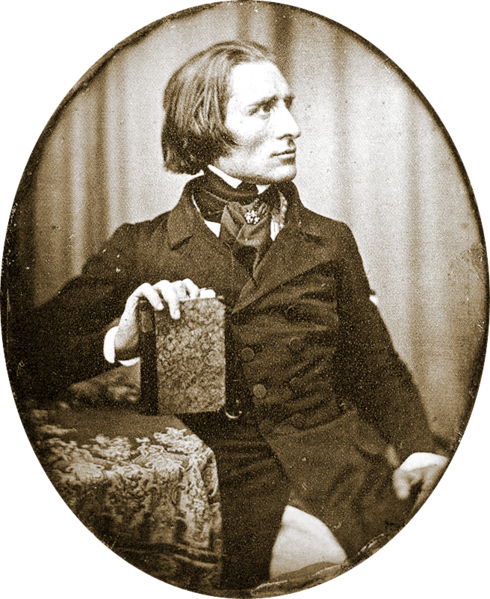Liszt, Les Préludes
 I sometimes think of Franz Liszt (1811-1886) as a neighbor. You can find numerous references to him and to his house throughout the materials on this site. Professor Carol wrote about the house this past summer as she sat outside with the grandchildren listening to the piano recital taking place inside. You can walk to Liszt’s house from our apartment in Weimar in just about three minutes.
I sometimes think of Franz Liszt (1811-1886) as a neighbor. You can find numerous references to him and to his house throughout the materials on this site. Professor Carol wrote about the house this past summer as she sat outside with the grandchildren listening to the piano recital taking place inside. You can walk to Liszt’s house from our apartment in Weimar in just about three minutes.
Liszt lived in this house during his second residency in Weimar from 1869 to his death, years actually spent traveling between homes in Weimar, Budapest, and Rome. Liszt’s first period of residence in Weimar from 1848 to 1861 was more turbulent and controversial. He lived up the hill (still not far away, but not on my walking routes) at the Altenburg, a residence that became the venue for the New German School of composers in opposition to the traditionalists. In the resulting “War of the Romantics,” Brahms represented adherence to traditional forms.
Perhaps Liszt’s greatest contribution to the repertoire was his development of the tone poem or symphonic poem during his first residency in Weimar, Les Préludes being the best known. Liszt’s tone poems were not really programmatic in that they did not follow a story line or specific pictorial images, but rather evoked general ideas. Often considered the “father” of the tone poem, Liszt is, by extension, the father of film music.
Les Préludes was originally conceived as an introduction to an earlier choral work Les auatres élèmens, written in 1844 and left unpublished. Based on poems by Joseph Autran, the four movements of the choral work corresponded to the four elements (earth, air, water, fire). But Liszt decided to use the introduction as a stand-alone orchestral work. Without any “program” to attach to it, Liszt turned to the poem Les Préludes by Alphonse de Lamartine. There is, however, no real correlation between Lamartine’s poem and the music.
The work is divided into sections with no break in between. Sections begin in this performance at 0:00, 3:02, 6:37, 8:20, 11:54.
u



